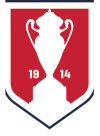The late 1980s looked like autumn for soccer in America. The U.S. National Team had missed out on nine straight World Cups and the collapse of the North American Soccer League (NASL) in 1984 left top players without clubs, paychecks, or professional options. But for those who remember Club España of Washington DC, those days were full of the style, youthful exuberance and the promise of soccer’s survival.
“That team was loaded,” Phillip Gyau, Club España striker and current head coach at Howard University, told USsoccer.com. “It was like a hand-picked all-star team from the DC area.”
The man who did the picking was Julio Piñon, a local businessman and immigrant from Spain. He kitted his side out in the red, yellow and blue of his beloved Spanish national team. “He had this amazing ability to make every kid in the team feel like his own son,” said Keith Trehy, a London-born defender and former England schoolboy who helped unlikely American University reach the 1985 NCAA final.
Making sure a slippery bunch of college kids and orphaned ex-pros showed up at the field on time and ready to play wasn’t always easy. “But Julio had a really good system,” said Trinidad-born defender Ronnie Simmons, now a housing inspector for the City of Baltimore. “He’d send his friends around to pick us up and eventually bought a school bus, painted it our colors, and bang we had a team bus!”
A Soccer melting pot
A host of top players pulled on the Club España jersey during the team’s short life at the top of the heap, when they went on a 33-game undefeated run and won both the National Amateur Cup in 1985 and the U.S. Open Cup, then the crown jewel of American soccer, in 1987.
Gyau went on to play for the U.S. National Team between 1989 and 1992, and so did Mike Brady, currently on the coaching staff at Duke University. Burly target-man Jean Harbor, though born in Nigeria, also went on to line up for the Stars and Stripes and was unlucky not to be included in the side that reached the 1990 World Cup in Italy. Versatile in attack or defense, Darryl Gee was a seasoned pro who once shared a locker-room with World Cup-winners Franz Beckenbauer and Carlos Alberto at the old New York Cosmos.
There were 12 nationalities represented in the side. Paul Emordi, a 6-foot 4-inch defender, was from Lagos. Dennis Ponce and Leonel Suazo both earned caps for the Honduran national team. Fernando Iturbe played in his native Spain, while coach Hugo Berly featured at the 1966 World Cup with Chile. “We even had a guy from Saudi Arabia; we called him Wabi (Abdulwhab al-Khaldi),” said big man Simmons, who recalls a few times when opposing fans dug too deep, suggesting he and his Club España teammates might go “back where we came from.”
“But we had a special chemistry,” said Trehy, who still plays in the over-40 leagues near his home in Nashville. “It was an interesting mix.”
“We gave each other a hard time - nothing was off limits: religion, race, anything,” said Simmons, who played a season as placekicker for Howard University’s football team. “And it was cool because it was like a real family that way. But on the field, we came together. No one could mess with us.”
Open Cup crown brings the curtain down
The contest that put Club España in the last four of the 1987 Open Cup was a heated one against four-time champions New York Greek-American. The second leg ended in a massive brawl that caught the attention of the local police. “That happened now and then with pride on the line, but it wasn’t a big deal,” said Gyau, whose family spans three generations of soccer in America. His father Nana won two African Cup of Nations titles with Ghana and played with the Washington Darts, while his son Joe, an American youth international, currently plays professionally in Germany.
The final-four was played in St. Louis’s Busch Stadium, the same ground where Club España won the Amateur Cup two years before, a result that led then-D.C. Mayor Marion Barry to declare a Club España Day in the city. After beating Mean Green of Dallas 3-0 in the semi-final, they faced off with a familiar foe in Mitre FC of Seattle, a side full of ex-pros from the then-defunct Seattle Sounders, who folded with the NASL.
The game was tense and decided by the first penalty shootout in the history of the Open Cup after 120 minutes of scoreless play. “It wasn’t the best game,” said Simmons, who remembers being dragged to the ground and breaking his collarbone. “It was the second season in a row I did that,” he chuckled.
Marcos Casas-Cordero, Emordi and Daniel Betancor scored from the spot to seal the title for the D.C. side, who lifted the trophy to bring the curtain down on a soccer supernova adapted to changing and challenging times. They never again played under the name Club España, a team Gyau calls “one of the best American clubs you never heard of.”
“There wasn’t really a professional outlet for us then like there is today. We couldn’t really make a living at it,” said Simmons, sighing on break from his work, the same every day, and remembering the time he was a champion. “We did it because we loved it.”







